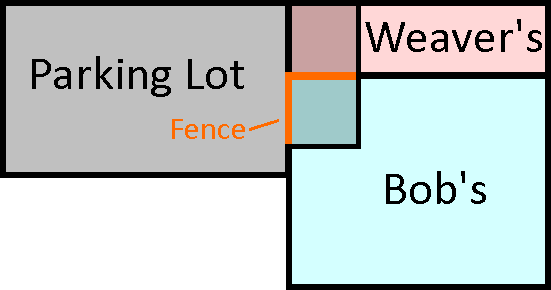Facts:
Plaintiff and defendant bought adjoined buildings, and plaintiff bought a portion of defendant's building. The seller included a 20-square-foot paved area outside the building to each buyer. This area was used as a back entrance for the parking lot behind the businesses.
The seller then sold the parking lot to defendant. Defendant took this opportunity to build a fence around plaintiff's 20-square-foot section. There was no benefit to defendant to do so; it was merely done to block plaintiff's back entrance.
Procedural History:
Circuit court denied plaintiff's injunction.
